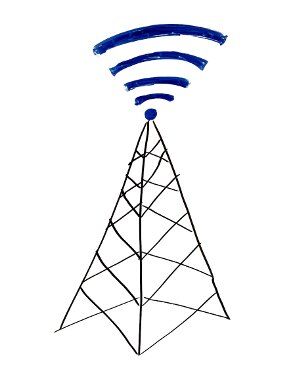Wi-Fi hasn’t started as a carrier related specification. But it is getting there one step at a time.
I have a love hate relationship with Wi-Fi.
On one hand, WiFi is crap, but on the other hand, it really is great when it works. It is also why I am so interested in knowing who will end up as my WiFi provider – I need a throat to choke when things don’t work.

Mobile network operators (MNO) are getting there – one of the latest Wi-Fi specifications (802.11u) deals with having Wi-Fi managed seamlessly as part of the MNO’s network. This is also known as HotSpot 2.0. Once that happens, things will be simpler for all – we already have a subscription relationship with our MNO – it will simply include Wi-Fi as part of the contract – no need to mess around with phone connectivity to Wi-Fi any longer.
Hopefully, it will happen.
There are reasons why this make sense – most of them relates to price structures of the operator himself. GigaOm recently listed their 15 leading companies in mobile. This list is very interesting. In the domain of Wi-Fi, you can find Free in there – the French carrier that changed the face of the market there. Here’s a quote from that piece:
Such pricing structures would be unsustainable for any carrier, but with the help of Wi-Fi, Iliad is hoping to drastically reduce the cost of delivering mobile data. The ISP has turned its broadband customers modems into Wi-Fi access points accessible by any device on Free’s network. The result is a community hotspot network with 4 million nodes throughout France.
Free used their existing wireline network to create a wireless network based on Wi-Fi and fill in its gaps with cellular by being an MVNO – and then spreading their own network where it made sense in terms of cost reduction.
Wi-Fi is going to be part of the MNO’s menu of network access technologies. It is also going to be the beginning of the buzzword: HetNet

This year or early next year the cable provider which I use as access provider will start to roll out IPv6 for their customers. There was already talk of doing something like what you mentioned above.
The customers don’t own the cablemodem/router (the cable provider does, I think the English word for that is commodate ?), so there might be a chance they’ll roll out devices capable of this because the device might not be IPv6 upgradable.
It has been suggested by the cable provider when they roll out a device for mobile it might even support 4G/LTE as they also have a telco license for the right frequency.
But there is a twist, the FCC-like organisation in the Netherlands said they have to allow other companies to license the use of these devices. So other telcos will be able to join them on the same infrastructure.
I just checked what I remembered, seems I was wrong it wasn’t the FCC-like organisation that forced them. It is just the cable-provider doesn’t want to create their own mobile network so they want to allow the mobile operaters to license from them.